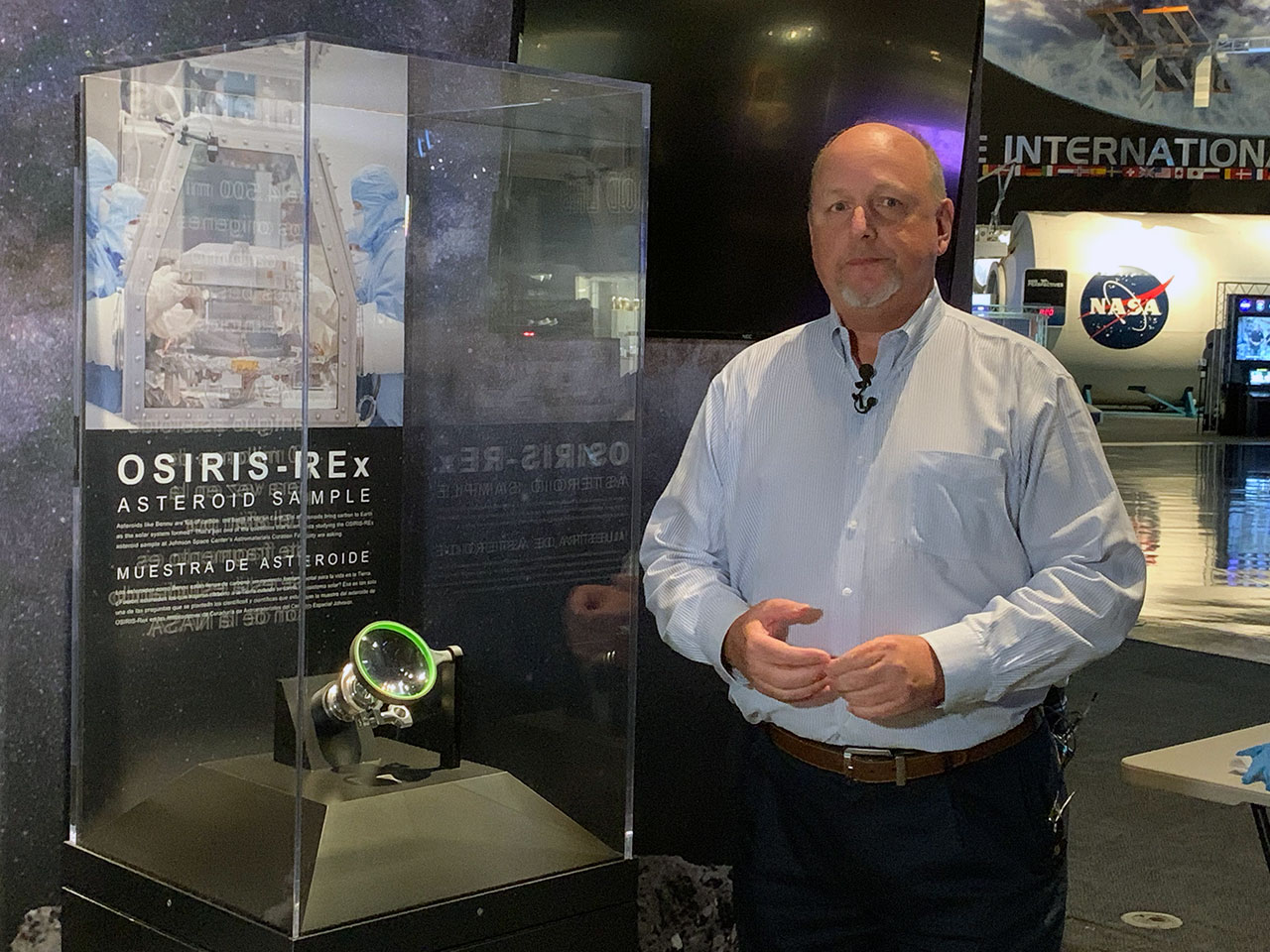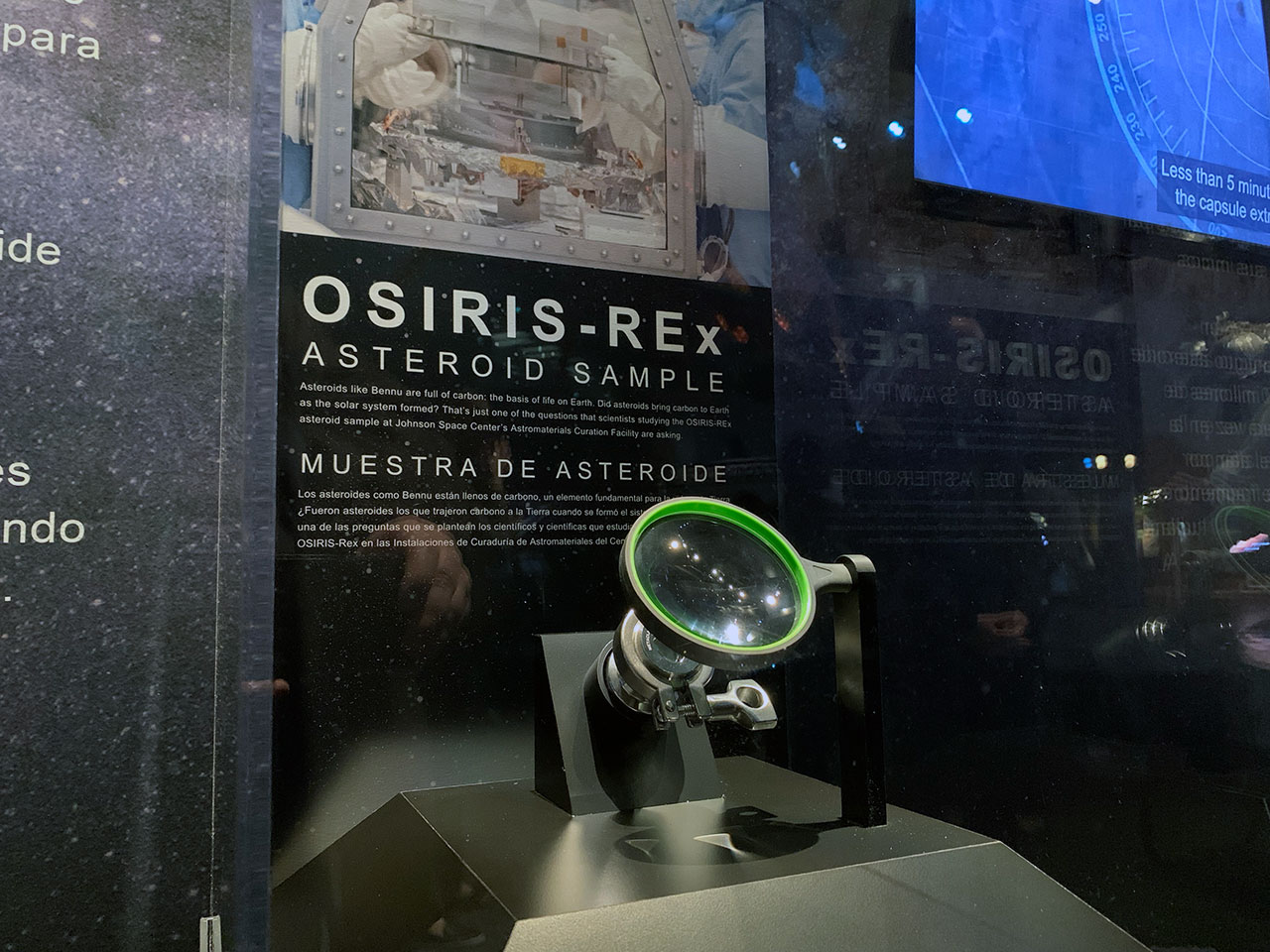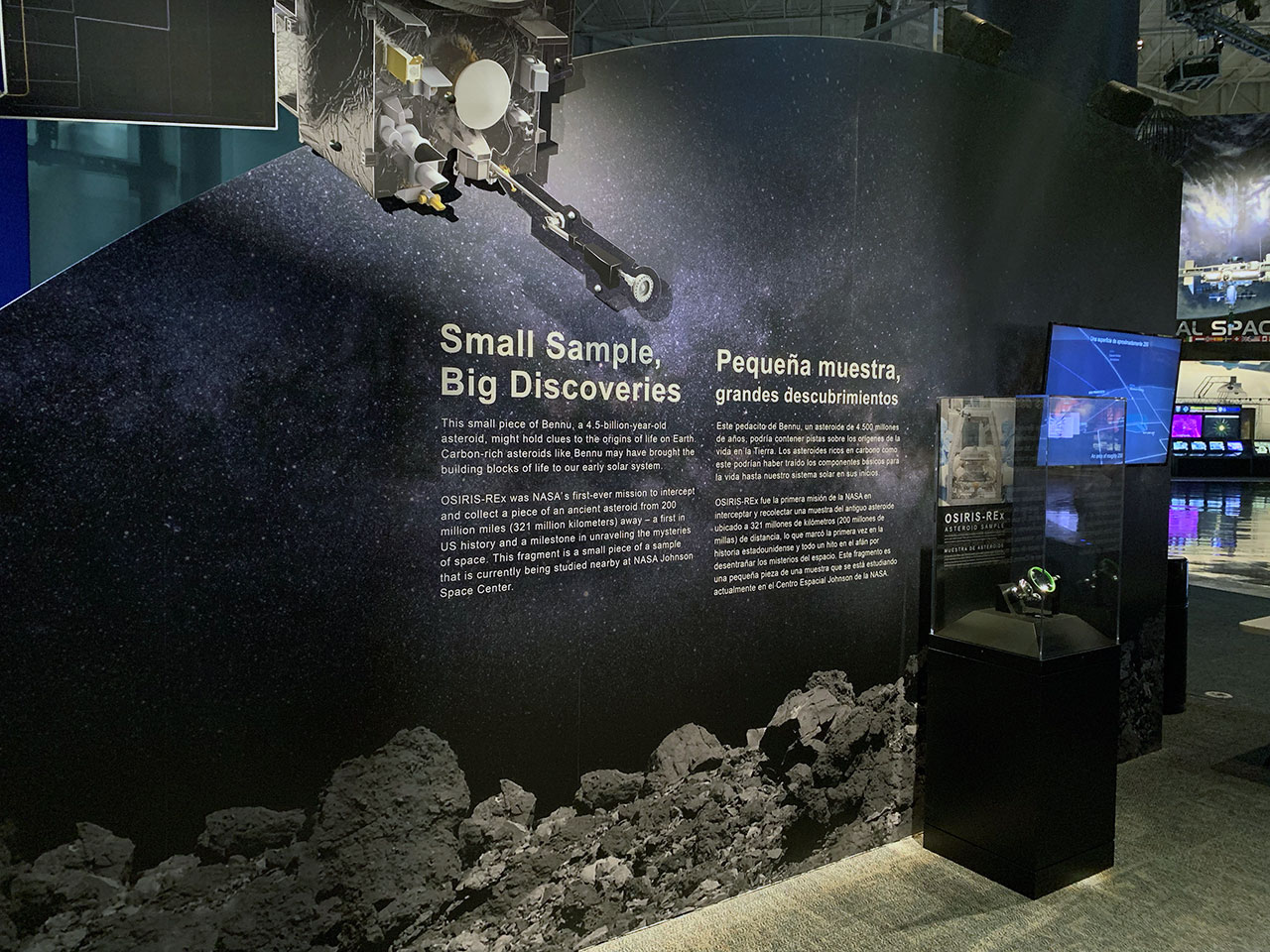Rare OSIRIS-REx asteroid sample debuts at Space Center Houston
It's only the second place in the world where the public can see a sample of the asteroid Bennu.

Move over, moon rocks: Space Center Houston has a new type of space stone in its showcase.
The official visitor center for NASA's Johnson Space Center on Friday (March 1) became only the second place in the world where the public can see a sample of the asteroid Bennu as collected and brought back to Earth by the space agency's OSIRIS-REx mission.
"Having a piece of an asteroid is is very rare," said Paul Spana, Space Center Houston's director of collections and curator, in an interview with collectSPACE.com. "There were only two asteroid sample missions prior to this, which the Japanese did several years ago, and they were only able to return a very small amount."
"Other than that, there are no other samples on display in the world except at the Smithsonian and soon the University of Arizona. So in that case, it's rarer than the moon rocks," said Spana.
Related: OSIRIS-REx: A complete guide to NASA's asteroid-sampling mission
The 0.005-ounce (0.15 grams) pebble represents just 0.1% of the total material that OSIRIS-REx (Origins, Spectral Interpretation, Resource Identification, and Security-Regolith Explorer) collected from asteroid Bennu in October 2020 and returned to Earth in September 2023. Held within a small stainless steel bottle in a pure-nitrogen environment, the black rock with white speckles is displayed under a magnifying glass, given its diminutive size.
"I also spent a lot of time trying to figure out the right height, where it was both good for kids and not too low where adults had to bend way over," Spana said. "I made marks on my office wall trying to find that height. We tested it out with the real sample last night, and it worked well."
Located just within the main entrance to Space Center Houston, along the path that visitors take to access the Starship Gallery, Lunar Samples Vault and the outdoor display of NASA's 747 Shuttle Carrier Aircraft in Independence Plaza, the new OSIRIS-REx exhibit also includes a video presentation that briefly explains the history of the mission and provides a 360-degree close-up look at the sample on display, as well as a computer tomography scan exposing the rock's interior.
"It has a high carbon content with oxygen, hydrogen and nitrogen. And what's really cool about that from the scientists' point of view is the fact that — speaking of hydrogen and oxygen — the clay is saturated with water. So those are all the building blocks of what you need for life, and that is one of the most exciting discoveries they have made studying the samples at Johnson Space Center," said Spana.
Guests wanting to know more about the sample can catch brief presentations by Space Center Houston crew members once every hour in front of the exhibit.
The sample is on loan from NASA for two years, though Spana is optimistic that the agreement will be renewed.
To celebrate the sample's debut, the first 200 visitors to see the exhibit on Friday were each gifted a 3D-printed model of Bennu as a commemorative keepsake. For those who were unable to attend or who came later, Space Center Houston has provided the file for the model on its website for anyone to download and print for themselves.
The Smithsonian's National Museum of Natural History in Washington, D.C. was the first to receive a sample and unveiled its piece of Bennu in November.
The University of Arizona Alfie Norville Gem and Mineral Museum in Tucson is set to reveal the third and last fragment of the asteroid to go on public display on Wednesday (March 6). The evening event will include a presentation by OSIRIS-REx principal investigator Dante Lauretta, who is also a regents professor and the director of the Arizona Astrobiology Center at the University of Arizona.
Space Center Houston will also feature members of the OSIRIS-REx team, who are working to analyze and catalog the samples at Johnson Space Center.
Salvador Martinez, lead astromaterial curation engineer for OSIRIS-REx, Nicole Lunning, lead OSIRIS-REx sample curator, and Justin Filiberto, branch chief of the research office and acting branch chief of curation within the Astromaterials Research and Exploration Science (ARES) division at Johnson Space Center, are scheduled to take part in a Thought Leaders Series presentation in late March.
Follow collectSPACE.com on Facebook and on Twitter at @collectSPACE. Copyright 2024 collectSPACE.com. All rights reserved.
Breaking space news, the latest updates on rocket launches, skywatching events and more!

Robert Pearlman is a space historian, journalist and the founder and editor of collectSPACE.com, a daily news publication and community devoted to space history with a particular focus on how and where space exploration intersects with pop culture. Pearlman is also a contributing writer for Space.com and co-author of "Space Stations: The Art, Science, and Reality of Working in Space” published by Smithsonian Books in 2018.
In 2009, he was inducted into the U.S. Space Camp Hall of Fame in Huntsville, Alabama. In 2021, he was honored by the American Astronautical Society with the Ordway Award for Sustained Excellence in Spaceflight History. In 2023, the National Space Club Florida Committee recognized Pearlman with the Kolcum News and Communications Award for excellence in telling the space story along the Space Coast and throughout the world.




